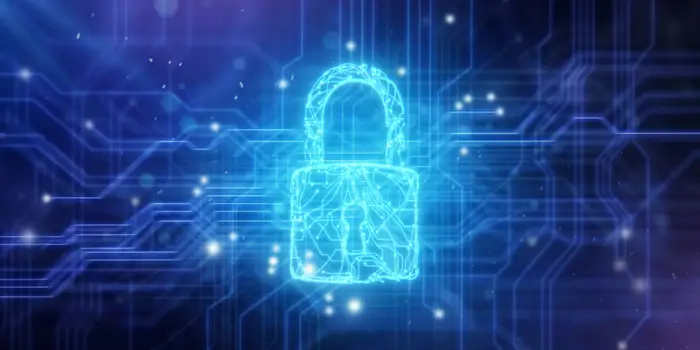Cybersecurity is the process of protecting a computer system from unauthorized access. This can include preventing hackers from using it to steal money or data, or disrupting the company’s operations.
Cybersecurity often overlaps with data protection, which is the process of ensuring personal information is protected. This can be a challenging task.
1. Encryption
Encryption is a cybersecurity tool that protects data from hackers and other cyber threats. It’s used to secure data in transit when it’s being transferred from one device to another, as well as at rest on storage devices such as USB drives and smartphones.
Encrypted data can only be read by those who have the correct encryption key, such as a PIN, password or hardware authentication system. This prevents unauthorized individuals from accessing information, even on powered-down computers or devices.
In addition to protecting data in transit, encryption also protects data at rest on storage devices, such as hard drives and cloud services. This prevents cybercriminals from stealing data from stolen devices or from using malware on a lost computer.
There are two main types of encryption, symmetric and asymmetric. Symmetric encryption uses a single key to encode and decode data, while asymmetric encryption depends on two keys – one private and one public. Asymmetric encryption is best for larger data sets that require multiple users to share and communicate with each other.
Security experts need to be knowledgeable about a variety of areas, including encryption, IT, and network security. They also need to be able to explain security risks in simple terms and work closely with others to keep their organization safe.
Cybersecurity professionals also need to be creative and be able to think of solutions to security threats that don’t exist yet. They should be able to stay up-to-date on cybersecurity trends and laws that change.
2. Access Control
Access control is a key component of cybersecurity, and it’s important for organizations to keep strict controls in place to protect data. These controls ensure that users are who they say they are and have the right permissions to access company resources, such as files or devices.
The first step of access control is authentication, which involves identifying who is accessing secured information or areas. This can be done using a username and password, PIN or biometric scan.
Authorization is the next stage of access control, and it involves determining whether or not someone has permission to access a specific area or resource. This can be done by comparing credentials to a database of user names and permissions.
Depending on how an organization implements access control, this process can involve one of several methods, including role-based, attribute-based, and discretionary access control (DAC). In the most common model of DAC, owners or administrators set their policies, and the system then determines what users can access.
While it may be difficult to establish and maintain strong access controls, they’re critical to protecting data and preventing unauthorized intrusions. It’s also vital to the concept of zero-trust security, which requires users to prove they have authorization and authenticate themselves before they can access or change any systems or data.
Having proper access controls in place is essential for businesses that need to store sensitive information in the cloud, as it can help reduce the risk of data breaches and other cyberattacks. It can also help businesses meet regulatory compliance requirements and avoid fines or revocation of licenses.
3. Backups
Backups protect data from the effects of accidental deletions, malware, and ransomware as well as natural disasters. They also allow elections offices to comply with data retention requirements and ensure timely recovery of critical election data in the event of a disaster or loss.
Backup systems copy all of the data in an organization’s computer system to a second location, such as a server, tape, or other storage device. This copy of the data is then used to restore the original system if it becomes damaged or loses data.
Ideally, this backup copy of the data is immutable — meaning it cannot be altered by administrators or ransomware. It should also contain a series of recovery points that can be used to restore the system in the event of an accident or attack.
In this way, backup systems can bridge the operational infrastructure and security teams and ensure they are working in unison to protect the organization’s data from cyberattacks.
A good backup system should enable users to easily back up and restore their data from a single source, using a common platform and unified interface. It should also allow IT teams to deploy and manage backups quickly and efficiently across multiple devices, including company laptops and mobile phones.
With the rise of cyberattacks, backups are more important than ever to protect organizations from data loss. Consequently, they need to be aligned with your security strategies and be protected against ransomware and other threats before they succeed.
4. Monitoring
Continuous cybersecurity monitoring helps enterprises detect any kind of anomaly and ensures that their systems comply with data privacy and security laws. This also helps in ensuring business continuity, protecting critical data and maintaining high levels of productivity.
Defending against cyber attacks requires skilled and experienced cybersecurity experts. They must be familiar with network intrusion detection, endpoint management, and data security. They also need to know how to use a security incident and event management (SIEM) system.
Cybersecurity monitoring can help you sift through a large volume of information and prioritize the most relevant alerts for your IT security team. This can help you respond to cyberattacks in real time, avoiding data loss and the potential costs of IT downtime.
To ensure that your data is protected, you must have a system that monitors all user activity in your system. Without this, it would be impossible to know who is stealing sensitive data or violating data policies.
A quality log or infosec monitoring system will learn what activities are normal and create alerts when threats are discovered. Combined with an effective alert system, this can help you identify threats faster and prevent them from affecting your business operations.
Monitoring systems may need to operate at different levels, such as the program, organisation, sector or country level. They also need to work across these boundaries, such as supporting partner organisations’ systems. This can make monitoring more complicated because it requires understanding of different cultures, cultures and time-frames.
The key to a successful monitoring strategy is to understand who the primary intended users are and how they use the information. This will help you design a monitoring plan that is suitable for your needs.
5. Security Measures
Data is one of the most valuable assets for any business, regardless of its size. It can generate revenue, protect reputation and brand, influence consumer trust and help achieve compliance.
As a result, it is imperative for all organizations to take steps to ensure the security of their data and information. This is a significant challenge due to the nature of the modern world and how much we rely on technology, especially computers and the Internet.
There are several cyber security measures that can be used to protect data, both in transit and at rest. These include encryption, access control and backups.
Using strong passwords is an easy and effective way to prevent hackers from gaining access to your sensitive data. Creating passwords that are both unique and difficult to guess is a must, as is changing your password frequently.
Another important security measure is to use firewalls and antivirus software on your computers and networks. Firewalls filter traffic between your network and the Internet, and antivirus software can remove viruses and worms before they can cause any damage.
Finally, it is important to educate employees about cybersecurity best practices and company policies. This will decrease their likelihood of causing a security violation and increase their awareness of the importance of cybersecurity.
Cybersecurity is an ever-growing area of interest for businesses, and it is becoming more relevant as the number of threats increases. However, many of these risks can be prevented, so prevention is the key to maintaining the security of your company’s information and systems. By following these ten cybersecurity measures, you will be better positioned to protect your data and information from theft and corruption.






More Stories
AR Vs VR – Which Technology Will Define the Next Decade?
Quantum Computing Breakthroughs
Space Tech in Focus: Exploring New Frontiers and Innovations